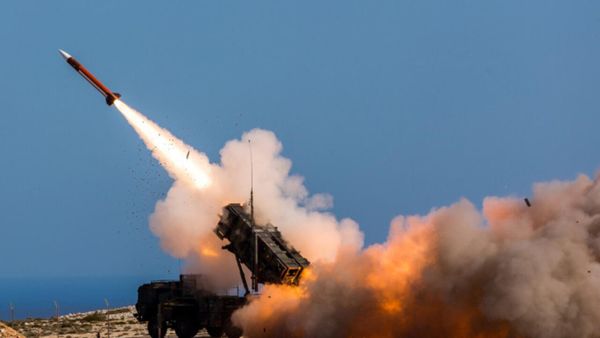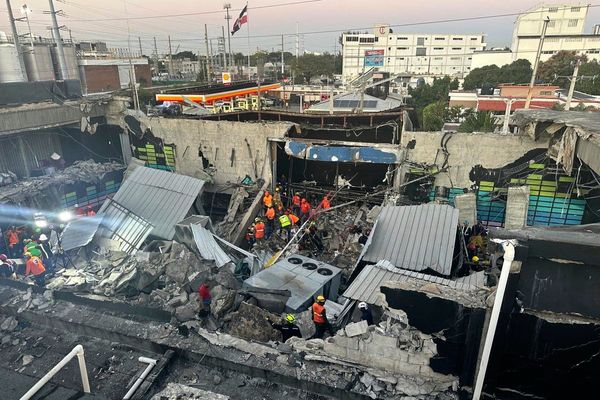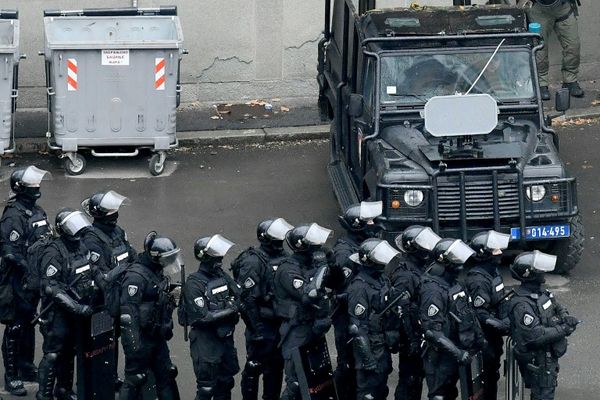Hawaii’s Kilauea volcano resumed its latest eruption on Monday, sending fountains of lava shooting more than 250 feet in the air.
Photos of the geological spectacle at Hawaii Volcanoes National Park showed yellowish-orange spurts, marking the eighth time they’ve returned to the volcano’s summit in under two months.
The latest episode began at 9:52 p.m. local time, following small surges of lava on Sunday evening that increased in intensity.
“Fountains from the north vent have grown from 50 feet (15 meters) to over 250 feet (80 meters) high in an hour and are feeding multiple lava streams at 10:50 p.m. HST. Active lava flows now cover approximately 15-20 percent of the crater floor,” the U.S. Geological Survey’s Hawaiian Volcano Observatory said.
With the eruption comes multiple health hazards, including high levels of volcanic gas that can produce vog, aka volcanic smog, and what’s known as Pele’s hair, a glass formation.
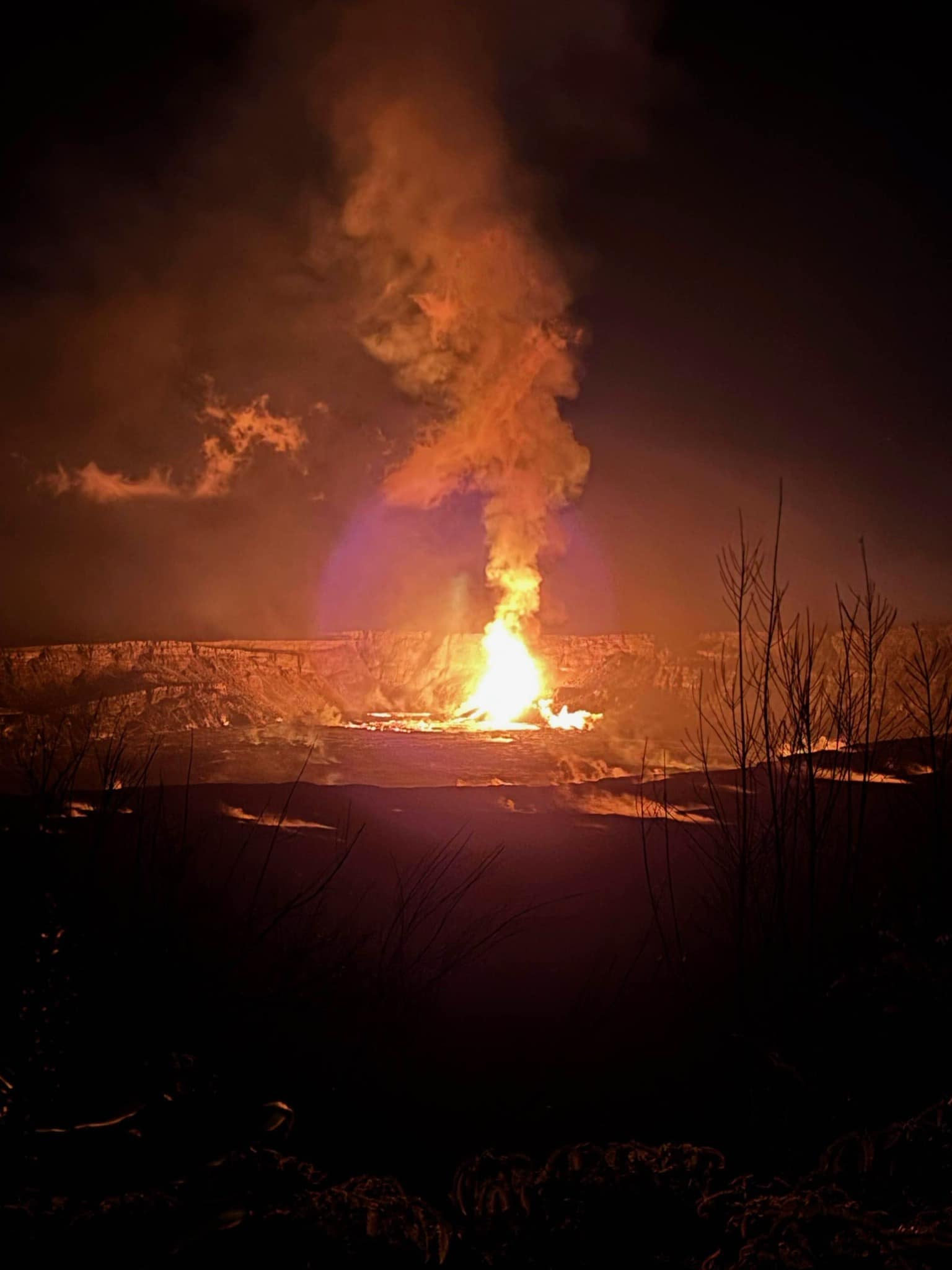
Vog, a visible haze, is created when harmful sulfur dioxide and other air pollutants react. It can negatively affect human health and agriculture, contaminating household water supplies by leaching metals from building and plumbing materials. Vog can also limit visibility when people are driving.
Pele’s hair appears to be long golden mats of hair on the ground. Really, they’re thin glass fibers that are named for the volcanic deity Pele and are formed by gas during an eruption and carried on the wind.
“The extent of Pele's hair is dependent on lava fountaining activity and current wind conditions. Residents and visitors should minimize exposure to these volcanic particles, which can cause skin and eye irritation,” the agency warned.
Other significant hazards remain around the caldera, a type of crater associated with volcanic collapse, including ground cracking and rockfalls that can be enhanced by earthquakes.
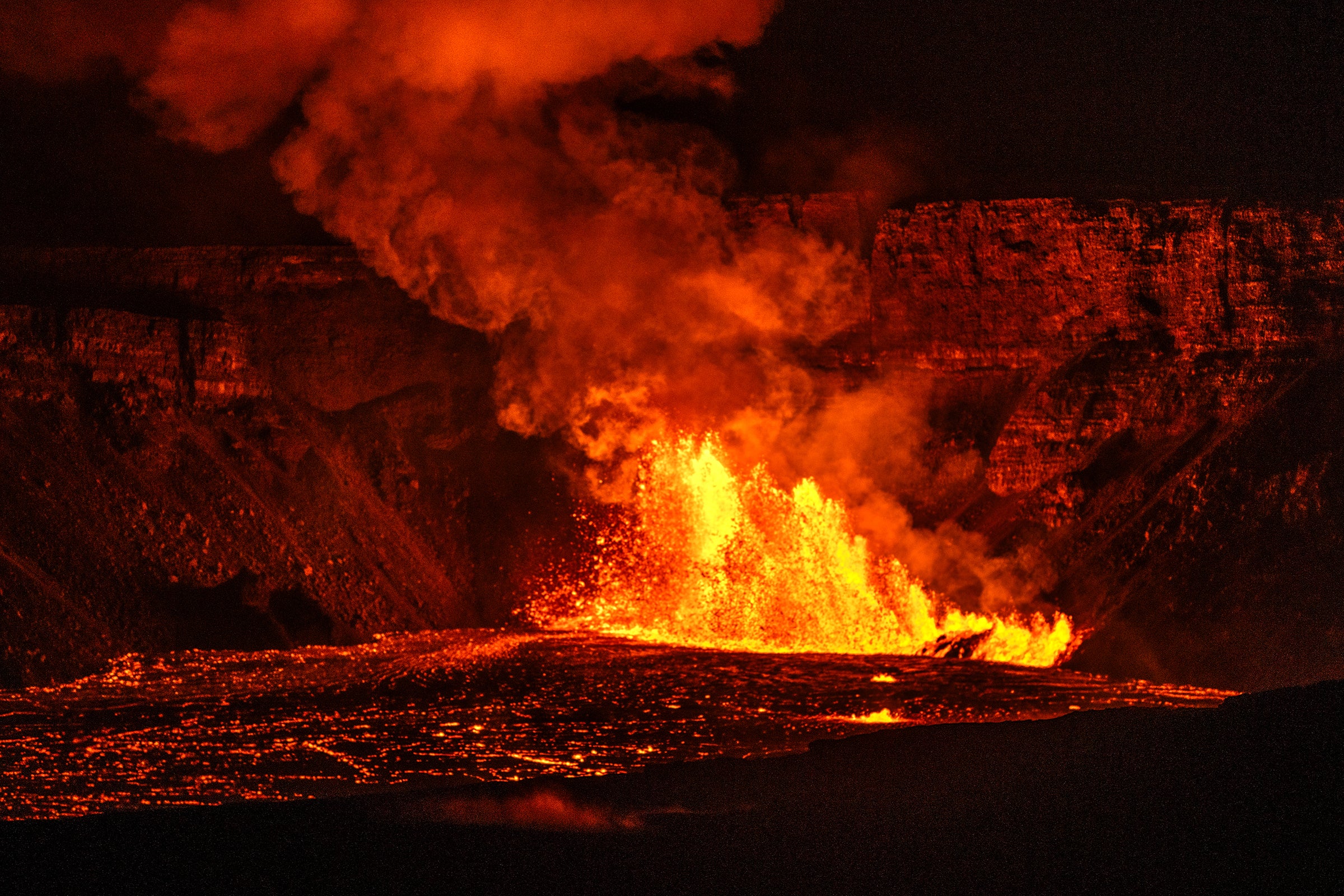
The eruptions began early on the day before Christmas Eve within Halemaʻumaʻu crater.
Each episode since then has continued for between 13 hours to over a week, separated by pauses in activity. The youngest and most active volcano on the island of Hawaii, it has been erupting continuously since 1983.
For those hoping to sneak a peak at the erruptions, the National Park Service has some guidance. The eruption is in a closed area but can be viewed safely from overlooks along the caldera rim.
“Stay on trail! Stay out of closed areas. Avoid cliff edges and other hazardous terrain. Keep your children near you at all times. Do not disturb nēnē,” it said. “Native geese are often seen in parking lots and near roads.”

